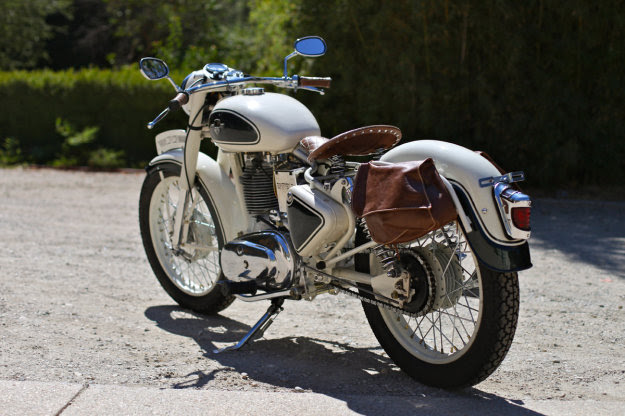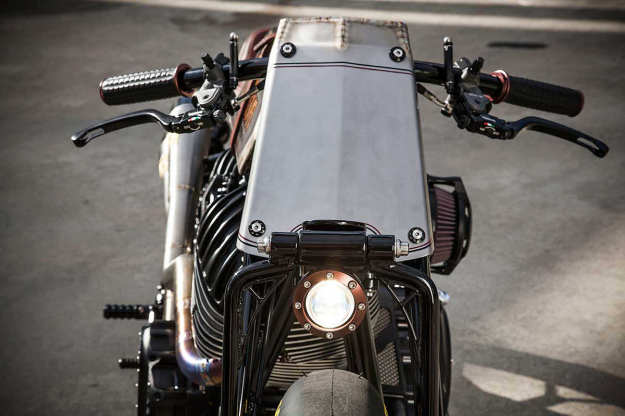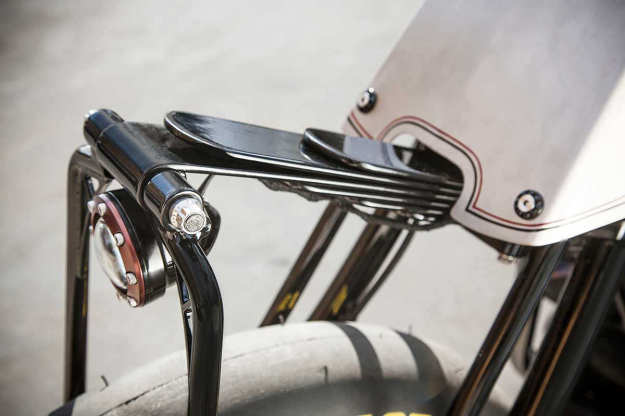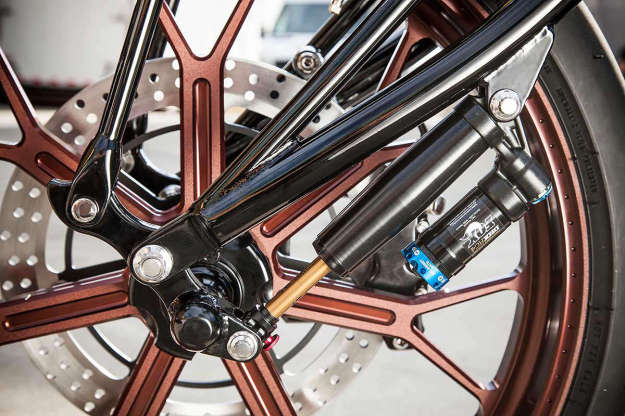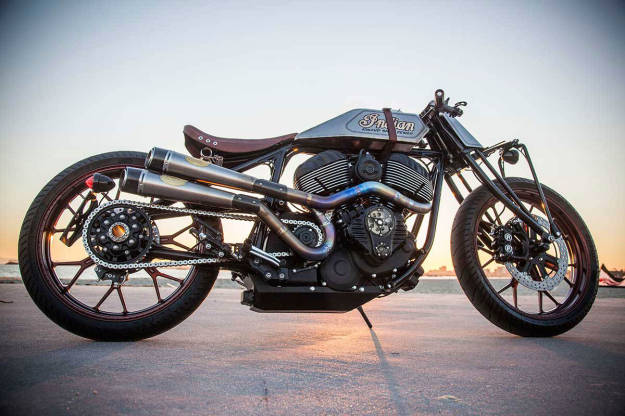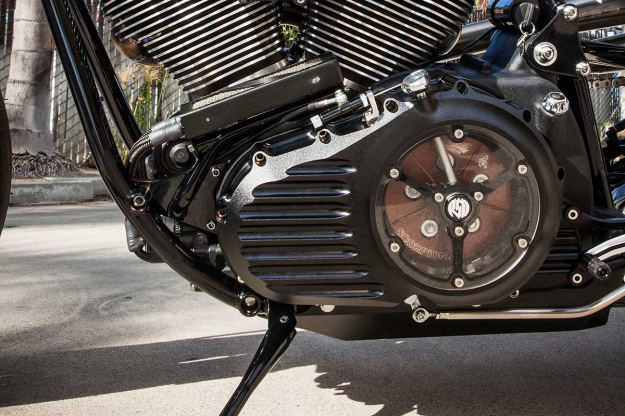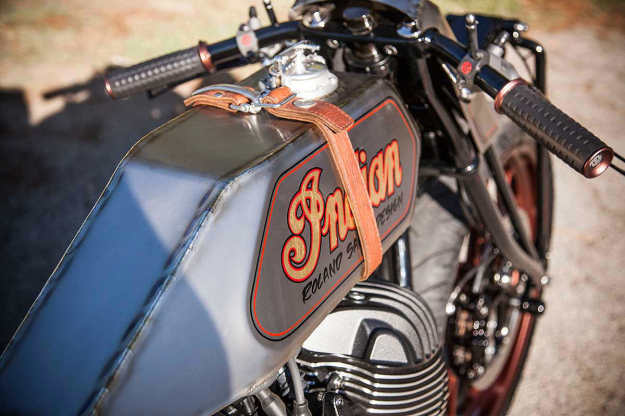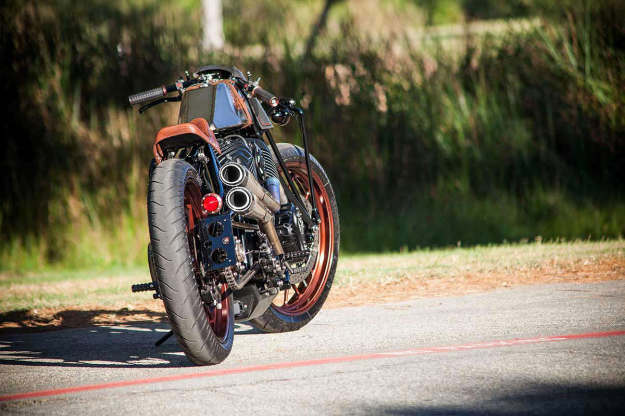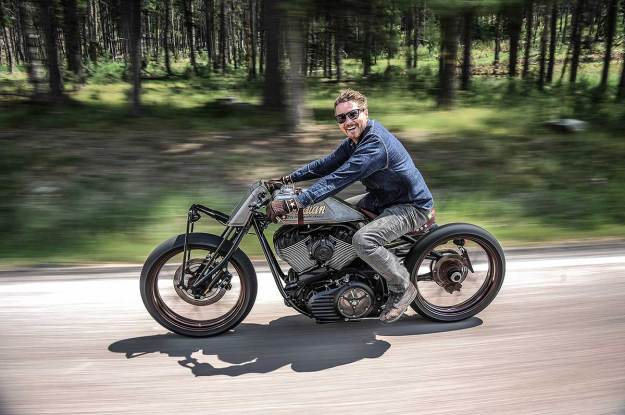Intermot just received its first look at the new Yamaha
XJR 1300 and XJR 1300 Racer. Both bikes fall into Yamaha’s “Sport
Heritage” model line positioned between the likes of the V-Max, XV950,
and SR400. Taking a few styling cues from collaboration with amazing
bike builders such as Deus Ex Machina, Wrenchmonkees, and Keino, these
two new models continue Yamaha’s interest in producing customized “Yard
Built” bikes harnessing modern day technology mixed with classic
styling.
 They both keep the old reliable air-cooled 1,251cc 4-cylinder with
98hp but get a new nostalgic take on the styling with a slim tank,
reworked single seat, and black 4-2-1 exhaust. Rear Ohlins suspension
and Diamond-Like Carbon inner tubes up front keep handling sorted out.
The XJR 1300 has an upright riding position while the Racer on the other
hand goes full-bore with a carbon cowling, carbon front fender, carbon
rear seat cover and clip-on bars putting the rider in an advanced riding
position.
They both keep the old reliable air-cooled 1,251cc 4-cylinder with
98hp but get a new nostalgic take on the styling with a slim tank,
reworked single seat, and black 4-2-1 exhaust. Rear Ohlins suspension
and Diamond-Like Carbon inner tubes up front keep handling sorted out.
The XJR 1300 has an upright riding position while the Racer on the other
hand goes full-bore with a carbon cowling, carbon front fender, carbon
rear seat cover and clip-on bars putting the rider in an advanced riding
position.
 READ MORE: 2014 Intermot Coverage
READ MORE: 2014 Intermot Coverage
Each of the bikes get aluminum side covers which are supposed to harken back to the seventies number plates. I just can’t get over how much they stick out above the other styling and it would probably be the first thing I pulled off, or “customized”, if I had one. But seeing as how this bike won’t be coming to the states any time soon, I wouldn’t have a chance anyway.
 READ MORE: 7 Reasons to Attend the Red Bull Straight Rhythm
READ MORE: 7 Reasons to Attend the Red Bull Straight Rhythm
At least it gives us an idea of what Yamaha has up its sleeves and just how comfortable they are collaborating with custom bike builders. Many times these customized collaborations get left on the drawing room floor, so it’s nice to see some of the styling make it through to production.
 READ MORE: Motorcycle Buyer's Guide
READ MORE: Motorcycle Buyer's Guide



2015 Yamaha XJR1300


Each of the bikes get aluminum side covers which are supposed to harken back to the seventies number plates. I just can’t get over how much they stick out above the other styling and it would probably be the first thing I pulled off, or “customized”, if I had one. But seeing as how this bike won’t be coming to the states any time soon, I wouldn’t have a chance anyway.

At least it gives us an idea of what Yamaha has up its sleeves and just how comfortable they are collaborating with custom bike builders. Many times these customized collaborations get left on the drawing room floor, so it’s nice to see some of the styling make it through to production.










